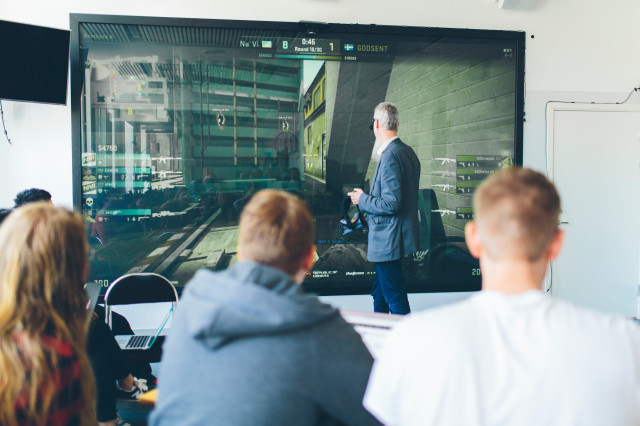- Representation and feature extraction in digital images
- principles of recognition and classification, Bayesian decisions
- discriminant functions, neural networks, support vector machines
- learning, optimization of classifiers
- overview of recognition in biological systems
- examples of recognition: handwritten text, faces, objects.
DD2427 Image Based Recognition and Classification 6.0 credits
This course has been discontinued.
Last planned examination: Spring 2019
Decision to discontinue this course:
No information inserted
Information per course offering
Course offerings are missing for current or upcoming semesters.
Course syllabus as PDF
Please note: all information from the Course syllabus is available on this page in an accessible format.
Course syllabus DD2427 (Autumn 2016–)Content and learning outcomes
Course contents
Intended learning outcomes
After the course you should be able to:
- identify basic notions, terminology, theories models and methods for classification of data,
- develop and systematically evaluate a number of basic methods for classification of data,
- experimentally evaluate algorithms for classification and recognition of objects in digital gray value images,
- choose appropriate method in order to automatically solve a given classification problem,
- know about theories of how the brain processes visual information for classification,
in order to
- be able to solve general problems of data representation and classification,
- be able to implement, analyze and evaluate simple systems for automatic classification of images,
- obtain a broad base of knowledge in order to be able to acquire information about and read literature in the field.
Literature and preparations
Specific prerequisites
Single course students:
SF1604 Linear Algebra, SF1625 Calculus in one variable, SF1626 Calculus in Several Variables, DD1337 Programming or corresponding courses
Equipment
Literature
Föreläsningsanteckningar, delas ut vid kursstart.
Examination and completion
If the course is discontinued, students may request to be examined during the following two academic years.
Grading scale
Examination
- INL1 - Assignment, 1.5 credits, grading scale: P, F
- LAB1 - Laboratory Work, 1.5 credits, grading scale: P, F
- TEN1 - Examination, 3.0 credits, grading scale: A, B, C, D, E, FX, F
Based on recommendation from KTH’s coordinator for disabilities, the examiner will decide how to adapt an examination for students with documented disability.
The examiner may apply another examination format when re-examining individual students.
In this course all the regulations of the code of honor at the School of Computer science and Communication apply, see: http://www.kth.se/csc/student/hederskodex/1.17237?l=en_UK.
Other requirements for final grade
Laboratory assignments (LAB1; 1,5 university credits)
Hand in exercise (INL1; 1,5 university credits)
Examination (TEN1; 3 university credits )
Opportunity to complete the requirements via supplementary examination
Opportunity to raise an approved grade via renewed examination
Examiner
Ethical approach
- All members of a group are responsible for the group's work.
- In any assessment, every student shall honestly disclose any help received and sources used.
- In an oral assessment, every student shall be able to present and answer questions about the entire assignment and solution.
Further information
Course room in Canvas
Offered by
Main field of study
Education cycle
Add-on studies
Discuss with course leader.